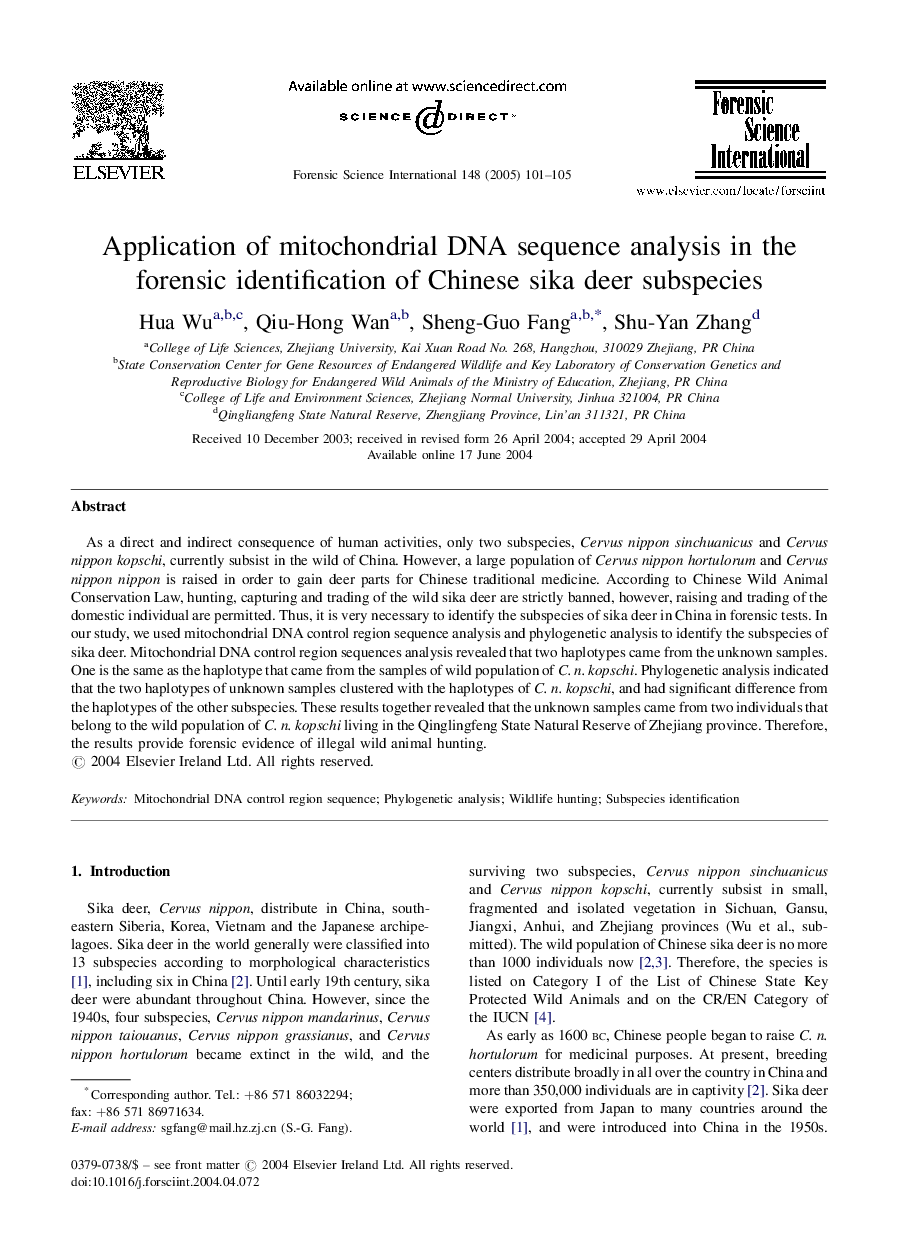| کد مقاله | کد نشریه | سال انتشار | مقاله انگلیسی | نسخه تمام متن |
|---|---|---|---|---|
| 9622607 | 160547 | 2005 | 5 صفحه PDF | دانلود رایگان |
عنوان انگلیسی مقاله ISI
Application of mitochondrial DNA sequence analysis in the forensic identification of Chinese sika deer subspecies
دانلود مقاله + سفارش ترجمه
دانلود مقاله ISI انگلیسی
رایگان برای ایرانیان
کلمات کلیدی
موضوعات مرتبط
مهندسی و علوم پایه
شیمی
شیمی آنالیزی یا شیمی تجزیه
پیش نمایش صفحه اول مقاله

چکیده انگلیسی
As a direct and indirect consequence of human activities, only two subspecies, Cervus nippon sinchuanicus and Cervus nippon kopschi, currently subsist in the wild of China. However, a large population of Cervus nippon hortulorum and Cervus nippon nippon is raised in order to gain deer parts for Chinese traditional medicine. According to Chinese Wild Animal Conservation Law, hunting, capturing and trading of the wild sika deer are strictly banned, however, raising and trading of the domestic individual are permitted. Thus, it is very necessary to identify the subspecies of sika deer in China in forensic tests. In our study, we used mitochondrial DNA control region sequence analysis and phylogenetic analysis to identify the subspecies of sika deer. Mitochondrial DNA control region sequences analysis revealed that two haplotypes came from the unknown samples. One is the same as the haplotype that came from the samples of wild population of C. n. kopschi. Phylogenetic analysis indicated that the two haplotypes of unknown samples clustered with the haplotypes of C. n. kopschi, and had significant difference from the haplotypes of the other subspecies. These results together revealed that the unknown samples came from two individuals that belong to the wild population of C. n. kopschi living in the Qinglingfeng State Natural Reserve of Zhejiang province. Therefore, the results provide forensic evidence of illegal wild animal hunting.
ناشر
Database: Elsevier - ScienceDirect (ساینس دایرکت)
Journal: Forensic Science International - Volume 148, Issues 2â3, 10 March 2005, Pages 101-105
Journal: Forensic Science International - Volume 148, Issues 2â3, 10 March 2005, Pages 101-105
نویسندگان
Hua Wu, Qiu-Hong Wan, Sheng-Guo Fang, Shu-Yan Zhang,